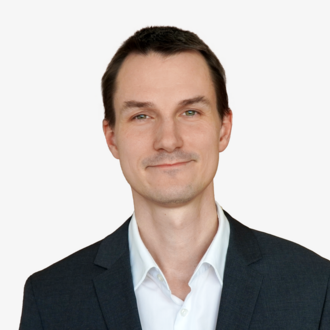
Wavetailor
Modular laser sources for the sustainable production of short, personalised production series
WAVETAILOR looks at two use cases that are manufactured using two different laser-based additive manufacturing (LBAM) processes. In the first use case, a drone is manufactured using Powder Bed Fusion (PBF), while in the second case, parts of a flow aid for a hydrogen-powered hypersonic aircraft are produced using Directed Energy Deposition (DED).
In both cases, the challenges are related to zero-defect manufacturing, sustainability and first-time right manufacturing. WAVETAILOR aims to enable high-precision manufacturing of complex material structures, disassembly, reuse and recycling of components while reducing the environmental footprint of both the manufacturing process and the components themselves.
To achieve this, three main pillars are being developed as part of the project: 1) a flexible, energy-efficient photonic setup based on a modular, diode-based laser source and multi-wavelength optics; 2) the full reconfigurability of this setup to consume minimal energy and material resources in the manufacturing of two use cases, and 3) assembly-level ZDM and ZDW strategies that manage the reliability of complex multi-material products at the machine level, shop floor level and delocalised manufacturing chain level. The latter pillar will rely on digital siblings (shop floor level) and twins (cloud level) for automatic evaluation of part/assembly design for circularity, first-time right process planning using synthetic legacy data, and ZDM/ZDW based on real-time process and post-process monitoring.
When the WAVETAILOR targets are achieved, the manufacturing process of the two use cases will have consumed 200 MWh less energy and 923 kg less waste, while production costs will be 50-65% lower. To prove this, a special sustainability study will be carried out as part of the project.
The Austrian Energy Agency (AEA) is a key partner in this project, providing expertise in the areas of life cycle assessment, environmental and social sustainability, energy efficiency and circular economy. As head of the "Sustainability and Circularity Assessment" work package, the AEA is evaluating the environmental and social impact of laser-based additive manufacturing technologies. In close cooperation with the project partners, the AEA carries out a comparative life cycle assessment for the DED-LB and PBF-LB use cases and quantifies their environmental impact over the entire life cycle. In addition, the AEA contributes to a circular economy assessment that evaluates recyclability, reusability and end-of-life strategies to promote circular economy principles. In addition, the AEA compares the project activities with the Sustainable Development Goals and analyses the social aspects of the project.
Project data
| [Translate to English:] Auftraggeber:in / Fördergeber:in | EU Horizon Twin Transition |
| Projektleitung |
Melanie Harrer (AEA) Vojislav Petrovic (Coordinator: Joanneum Research) |
| Projektteam |
Lorenz Strimitzer Lisa Freisling Monika Wagner Bernhard Wlcek Michaela Penn |
| Projektpartner:innen |
Joanneum Research Coventry University Lortek S Coop Prima Additive SRL NlightEurope SRL Z Prime GmbH Destinus Spain SL Aerotecnic Metallic SL Morphica SRL Tematys Austrian Energy Agency |
| Projektdauer | Jänner 2024 bis Juni 2027 |
Contact person
